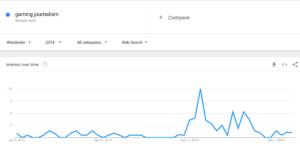The Hostile Audience: The Effect of Access to Broadband Internet on Partisan Affect by Lelkes, Sood, and Iyengar.
The data behind this research covers from 2004 to 2008. But there are recent changes stemming from the government and ISP laws could be coming due to the recent attacks on Net Neutrality. These changes could quickly overshadow or render useless many of the findings and conclusions made in this paper. Measuring polarization due to Internet access becomes much more convoluted when considering that Internet traffic can manipulated and treated so differently depending on the household as to constitute censorship. And there would be no way to defend the claim that ISPs can be unbiased providers of news, information, and communications.
These kinds of issues makes me conflicted over whether governments, laws, and societies should change rapidly or slowly. A ‘fast’ government would have such a short-term outlook on solving issues that progress would interfere with ongoing research while also making previous research inapplicable. But a ‘slow’ government would restrict the application of research findings be laborious enough to not be reactive or effective. Perhaps it is research methodology that should change instead, allowing studies that are faster and less thorough to be admissible as strong conclusive evidence. This could change the public outlook on reported scientific evidence as a quicker and more useful source of information, while losing a (hopefully) small amount of trustworthiness.
I also doubt that the cost of building Internet infrastructure be the single factor to determine broadband accessibility. There are many other factors that can interfere with this assumption. There are many known instances where broadband access is only provided by a single ISP in an area, allowing them complete control over Internet pricing. This makes all households on either extreme of financial stability be misrepresented or wrongly categorized in studies that assume Internet infrastructure costs are driving factor of Internet access. I am glad they address this in future sections in the publication, talking about the other factors behind broadband demand and references Larcinese and Miner’s previous work when determining a proxy for broadband uptake.
